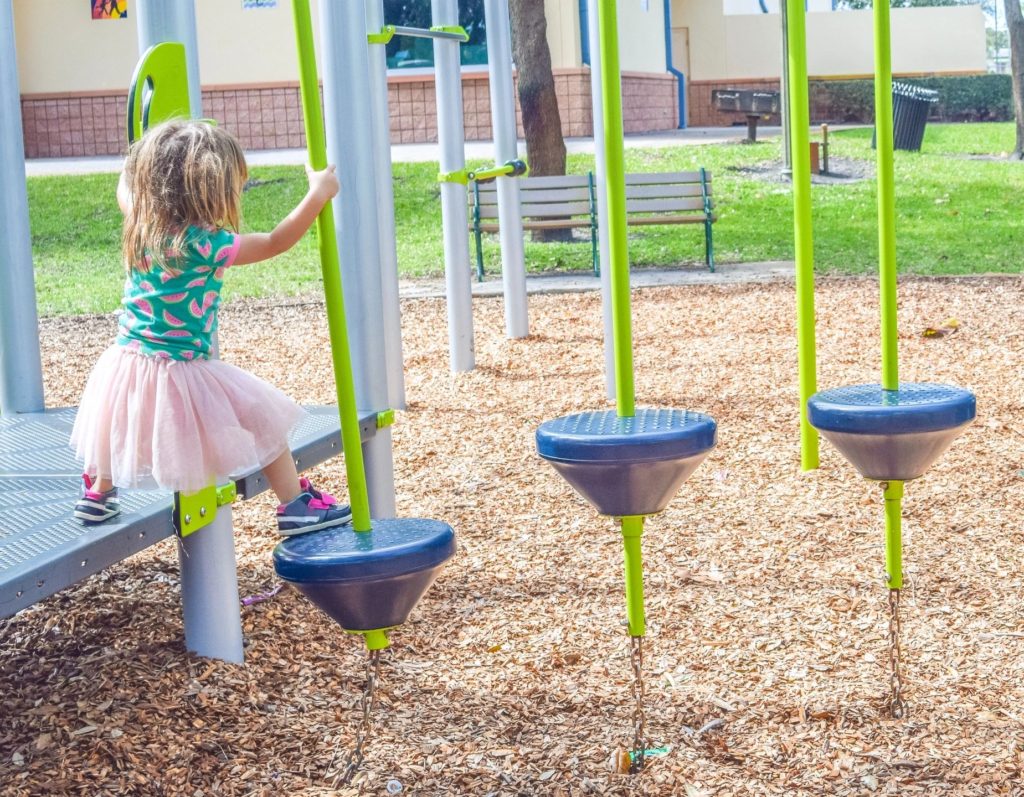“Put that stick down! You’ll poke your eye out!”
“Stop pushing your friend. I don’t think he likes that!”
“Don’t get to close to the edge of the stream or you’ll fall in!”
“Don’t do flips off the couch. You’ll break your neck!”
As parents, we’ve all said these things, and wondered why our kids don’t listen. We’ve been on this planet a lot longer than they have, and we have wisdom to impart. Do they think they know more than us? Well, in this case, yes. Yes they do.
Risky behavior isn’t without risk, but why is it such a natural tendency for all young animals to engage in such play? Peter Gray, PhD, posits that the risk of injury must be outweighed by some other developmental benefits of rough play. Research shows that depriving lab animals of risky play when they are young inhibits their ability to respond appropriately when faced with real danger. The findings suggest limiting risky play inhibits children’s ability to properly regulate their emotions (Peter Gray, 2015). In other words, all of us mother hens and helicopters out there, while well meaning, are setting our children up for emotional failure in the future.
Not only do children love rough, risky play, they need it. Allowing children to feel fear and the thrill that these and other risky or rough behaviors give them creates more emotionally balanced children. I am not advocating allowing your toddler to cross the street alone, or letting your school-aged child build a campfire with friends in the woods. There are reasonable risky behaviors your child can engage in while playing. Some age-appropriate risky play includes:
- Play fighting. Very rarely does play fighting end with serious injury or due to escalation of aggression. We know this because everyone is smiling and actively engaged, and children understand that hurting someone ends the game. Often children will come to us if play gets too rough, not because they don’t like it, but because we have taught them that is the appropriate response (Carlson, 2011).
- Tag often ends because an adult intervenes when a child gets pushed. Have you ever stood back, and watched what happens next? Children will often help a friend get up, they will take turns being the chaser and the chasee (both important roles). If someone gets hurt, the game is over before everyone has the chance to be “it” and that’s not fun.
- On the playground, encourage your child to use the swings. Swings are great for body coordination, vestibular development (balance), and are just plain fun.
- Climb up and down the slide with a group of peers; climb over the side of a slide, etc.

- If the swings and slide are still too much for you, enroll your child in a gymnastics class.
- See that tree over there? Climb It!
- Use adult tools such as shovels and drills. For Small Hands offers many child-size tools.
- Use a plastic knife to cut fruits and veggies for a salad. Like other adult tools, kitchen utensils need some instruction, but they should not be feared…unless you are a cucumber.
For a more detailed discussion of risky play, you can read “Risky Play: Why Children Love it and Need It” by Peter Gray, PhD in its entirety.
–Alexis Joyce, Preschool Director
References
- Carlson, F. M. (2011). Big Body Play. Washington, DC: National Association for the Education of Young Children.
- Peter Gray, P. (2015, October 23). Freedom to Learn. Retrieved from Psychology Today: https://www.psychologytoday.com/blog/freedom-learn/201404/risky-play-why-children-love-it-and-need-it


